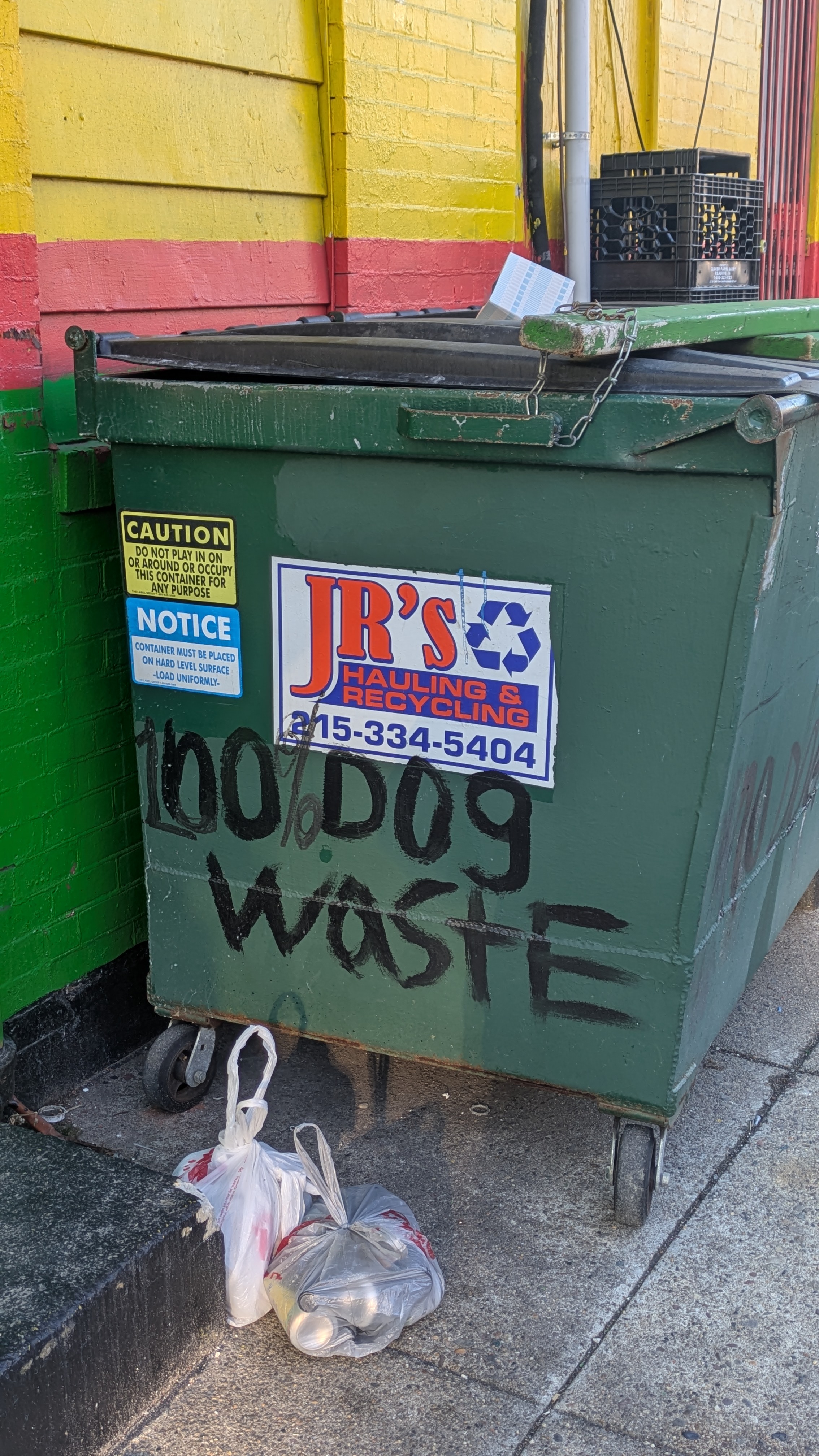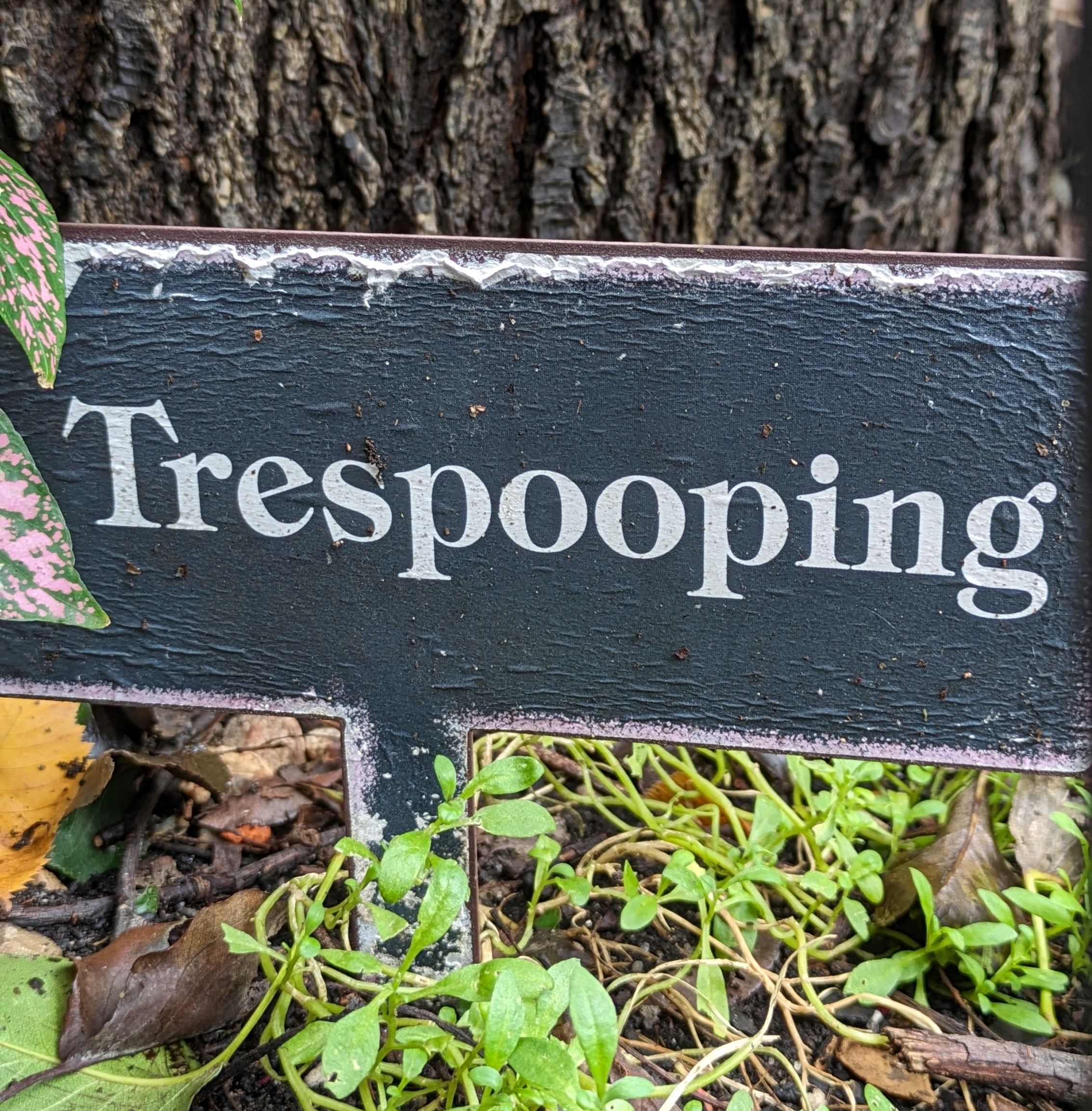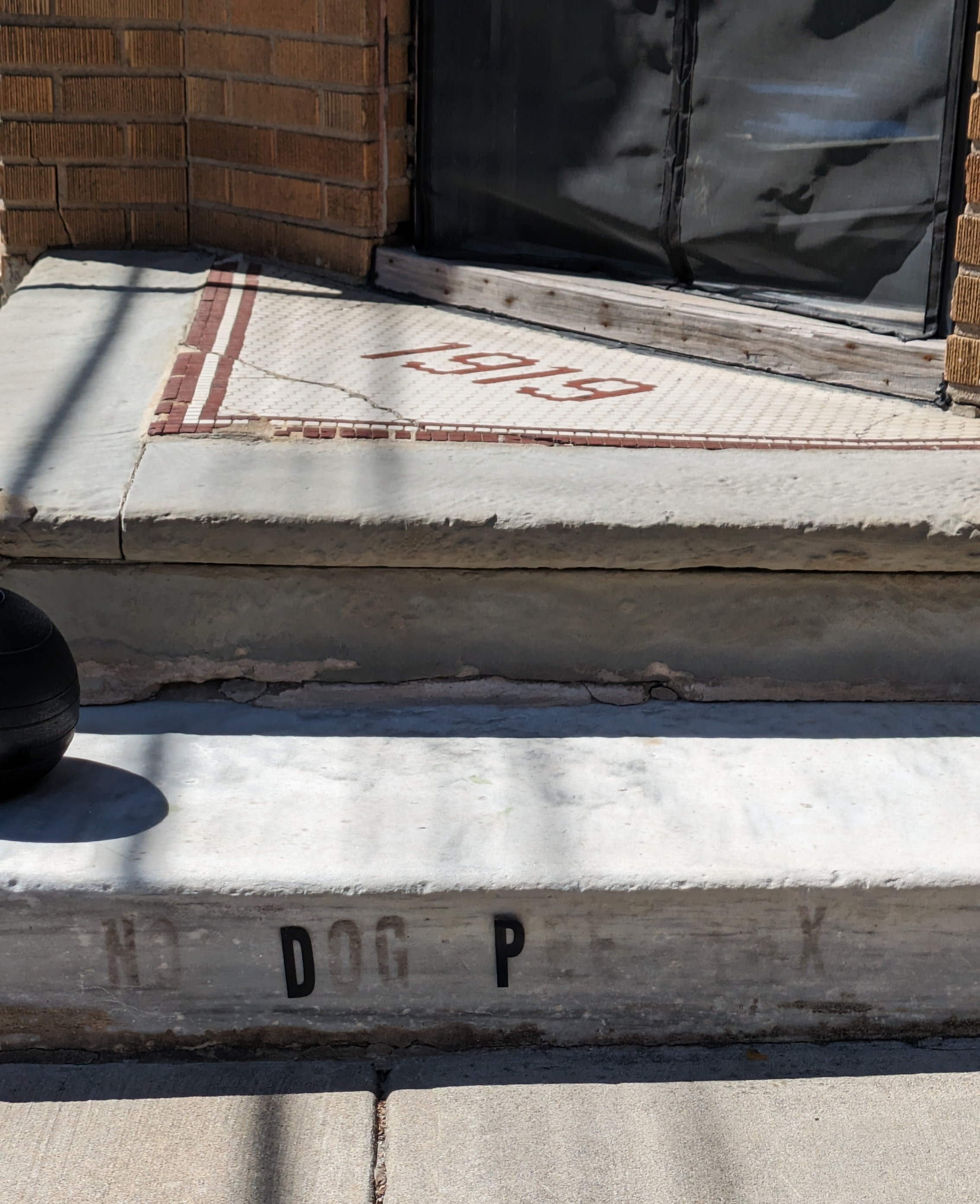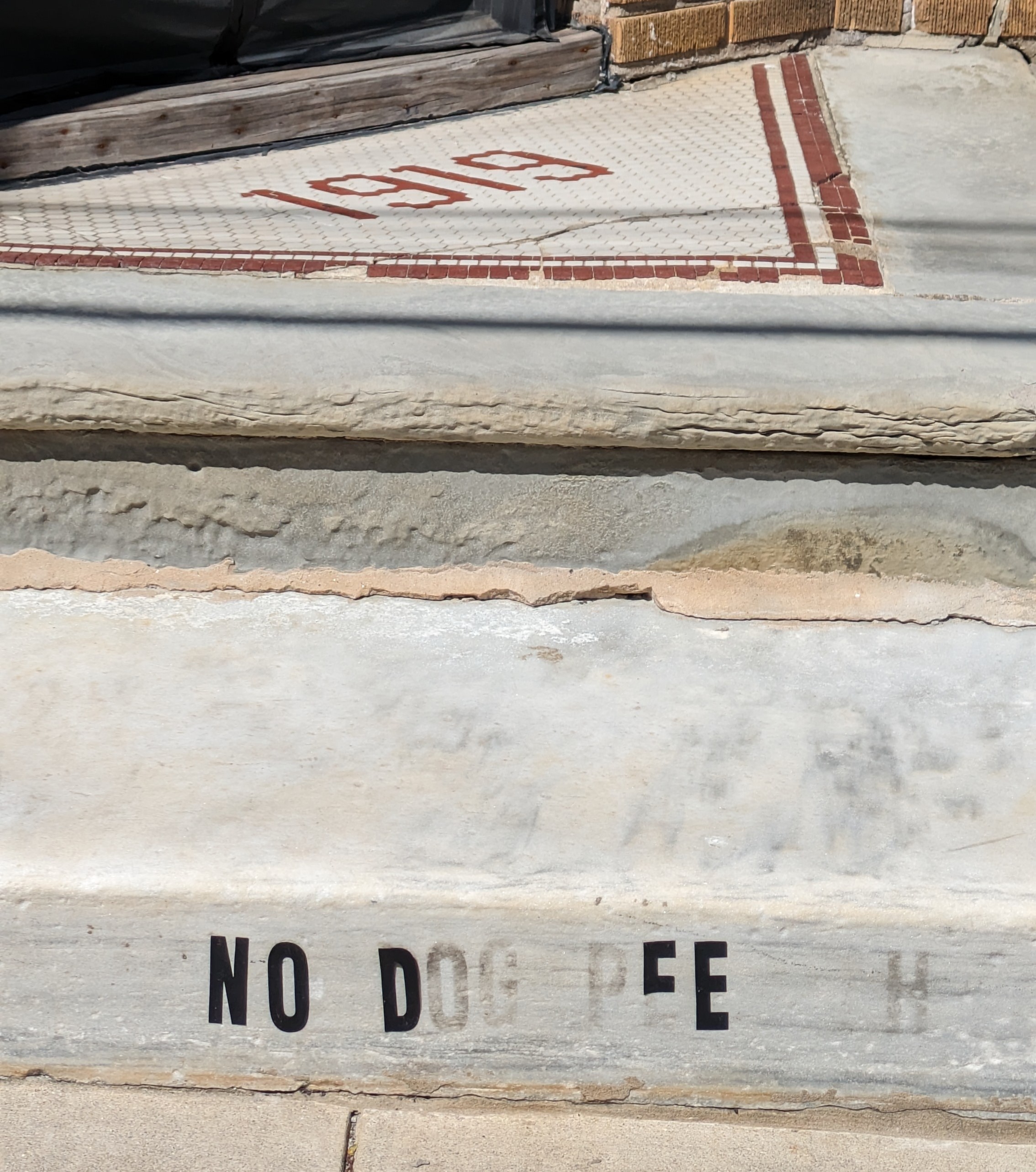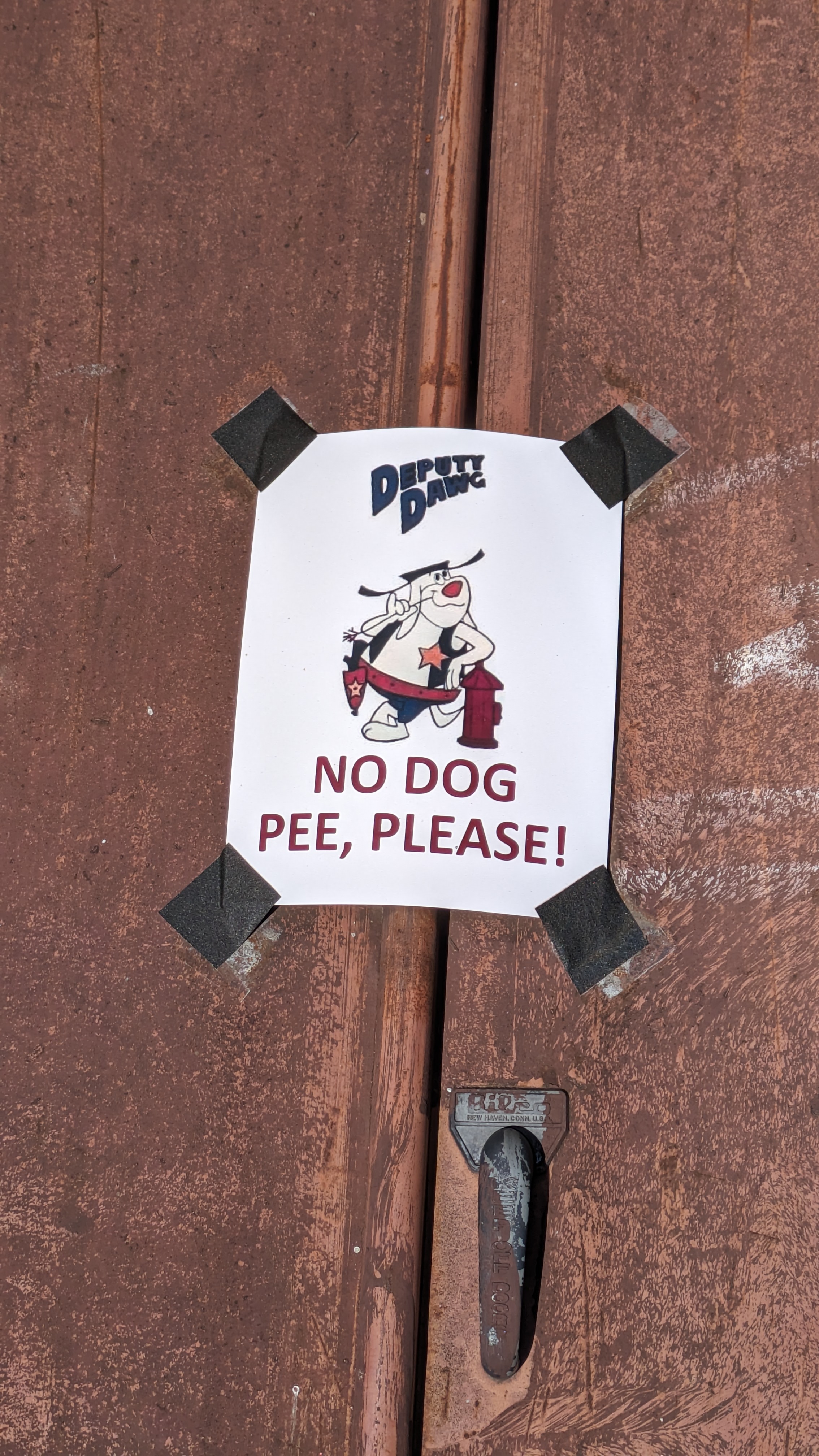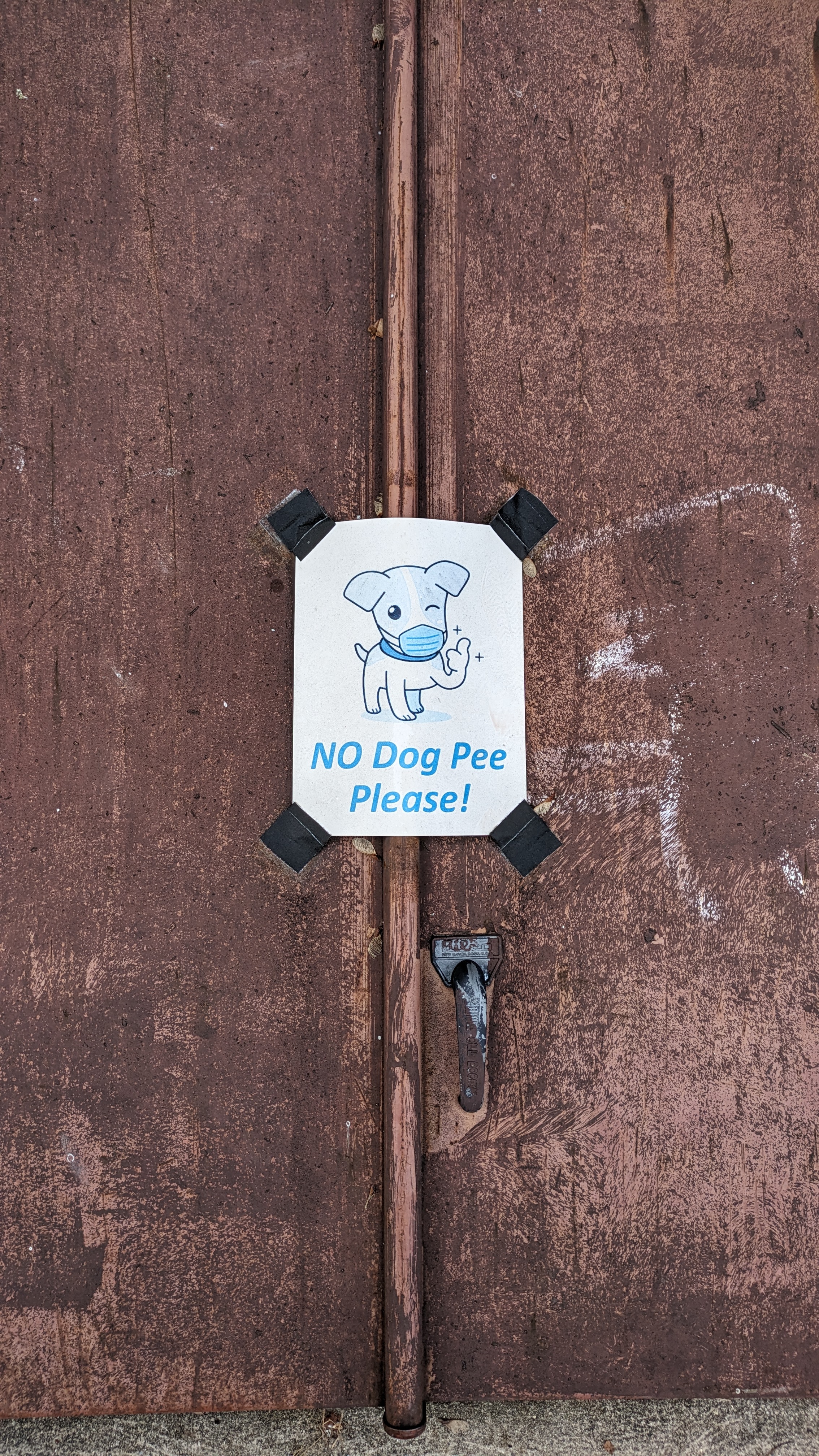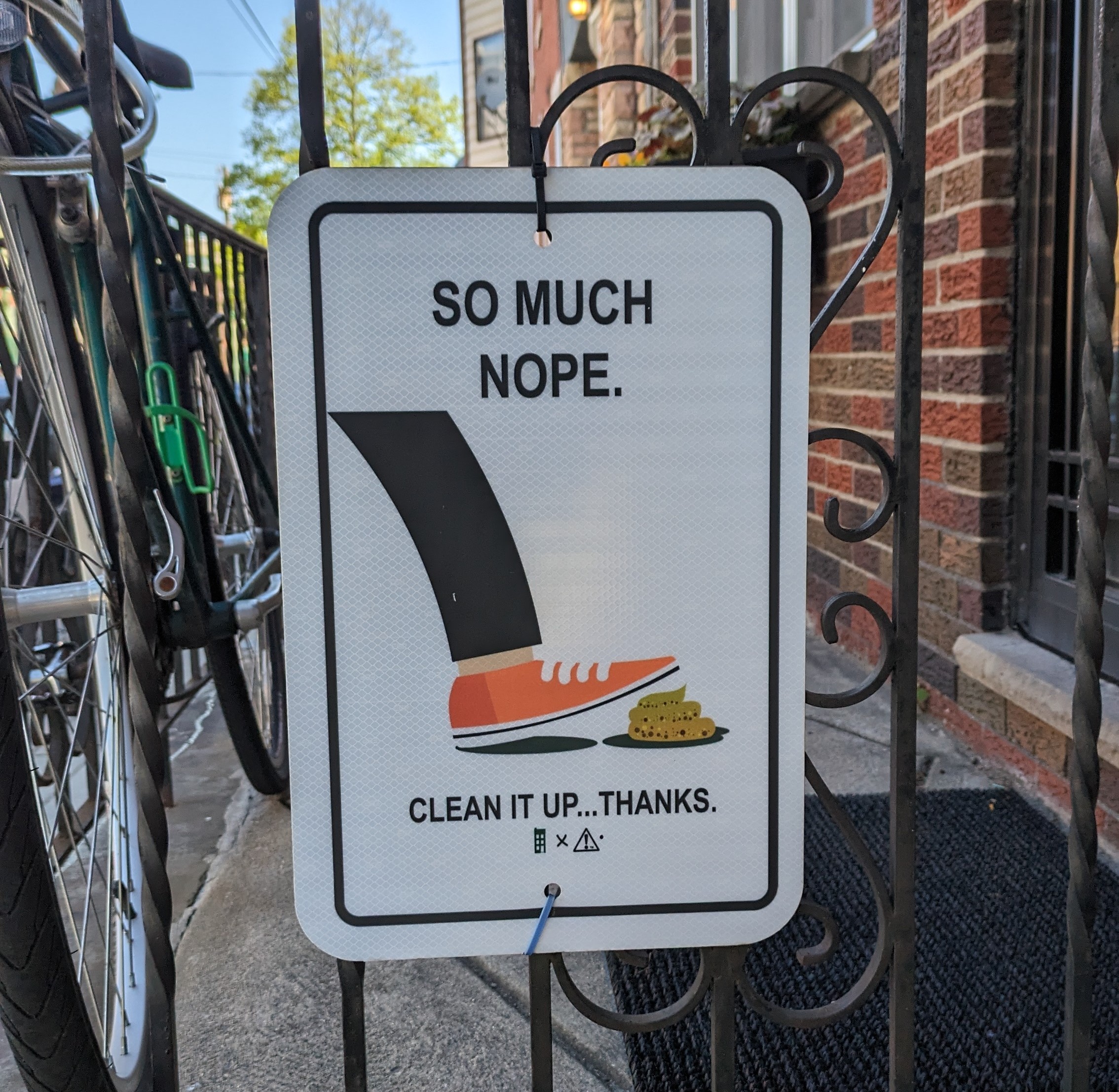Links Loved
- WFMU Random Archive Generator
- USDA watercolors of persimmons
- Okaeri: The Nisei Legacy at Shofuso, an exhibition I am very proud of :')
- ✿✿✿✿✿✿ ALT TEXT AS POETRY ✿✿✿✿✿✿
- Alt Text Selfies
- The [Math] Knot Atlas Wiki; selected knots below
- Disability Archives Lab ☺
- Philly Municipal Photo Archives. You can look up pretty much any Philly address and get many old photos of it!
- Kiyoshi Kuromiya's CritPath AIDS resources website, archived July 7th 1997.
- "Where There's Smoke There Must Be Fire" by Evan Forster in POZ Magazine, Feb 1, 1996
- "Crisis Infrastructures: AIDS Activism Meets Internet Regulation" by Cait McKinney
- Kiyoshi Kuromiya interview with Marc Stein, June 17, 1997, in the Philadelphia LGBT History Project, 1940–1980" [exactly 20 days before the archived page was captured]
- rainbowquery.com,
"SEARCH THE QUEER INTERNET"archived Feb 8, 1999, but there are many iterations up to the early 2000s. - archived crazymeds.us, captured July 15, 2015. i really wish the forum was archived too but it's not :-(.
- learned about this in the essay "Loose Leaf" by Lindsay Eales which is really good [but intense]. You can shuffle the essay online with this shuffling tool I made.
- philart.net and philart.net South Philly tour←simply amazing thank you Jeff.
- transreads.org ←open-access trans readings hell yeah
- response letter madlibs in this 1997 zine are really good 👀
- Map collection that made me GASP ←thank you Nora.
- Origami bookbinding technique tutorial
- Super Strength flavor oils [i have banana cream & eggnog] [and also the banana bakery emusion] [if you want some lmk I have waaay too much]
- American Folk Art Buildings collection
- Bonkers barrack situation
- HILDEGARD OF BINGEN: A TEMPORAL LOBE EPILEPTIC, AN INGENIOUS WOMAN, OR BOTH? [personally, i am both]
- Archival epilepsy material [and the entire archive too]
- List of pigments [the color tools on this site are also great]
- Kabbalistic colors site
& list of web-safe Kabbalistic Tree of Life colors - This Japanese yellowpages site that still lists the restaurant my grandmother worked in which closed in the early 2000s
Queer Early Internet Links
[1997 ⇝ 2001]
- Webpages hosted by Critical Path [July 7, 1997]
 [July 7, 1997]
[July 7, 1997]- Q'zine Queer Talk Radio Magazine [December 2, 1998]
 [December 12, 1998]
[December 12, 1998]
- Transgender Personal Pages [May 8, 1999]
- Transgender Databases [October 10, 2000]
- Transgender FTM [October 18, 2000]
- Net Zines [June 17, 2000]
- TransWorld [February 3, 1999]
 [November 17, 2000]
[November 17, 2000]- TransInfoProject Guestbook [December 24, 2001]
- transsexual.org and "The Gender Test Center" [May 10, 2000]
 [October 21, 2000]
[October 21, 2000] [November 29, 2001]
[November 29, 2001]
Not-terrible ways to use artificial banana flavoring I've experimented with [please contact me with more suggestions!]
- Artificial banana old fashioned:
- make artificial banana simple: 1/2 cup sugar, 1/3 cup water, like just a few drops of banana cream super strength flavor oil. heat until sugar is dissolved
- combine ~1tsp banana simple, a few dashes bitters, 2oz whiskey in a glass [rye works well apparently, probably bc the banana is not overpowered with more sweetness. wasting Suntory Toki on this tastes great but it is indeed wasting it.]
- stir around
- add big ice cube carefully, stir some more and wish you had a swirly bar spoon instead of the long slender spoons that you love but don't work well for this
- i haven't had any citrus to peel and add, but i suspect orange would work better than lemon
- enjoy the drink and also enjoy your housemate telling you "it slaps," ignore that he is probably just saying that because he's emotionally distressed and needed a drink of any kind
- notice it tastes a bit like that $20 cocktail at the Ranstead Room that includes banana in a mysterious way. appreciate that you can enjoy this in a room that neither contains uncomfortable portraits of naked women nor finance bros on uncomfortable first dates
- Artificial banana Canelés de Bordeaux
- follow Chef John's recipe but sub vanilla extract for equal amount banana bakery emulsion [but double would probably be better, this ended up a little too subtle for my tastes]
- add an ungodly amount of yellow food coloring so it looks flourescent yellow like it did in my dream [I only added 4 drops and it wasn't satisfying--double or triple that amount]
- while it's baking open all the windows because the whole house will smell like banana runts. it'll smell that way even with the windows open but in a less intoxicating way. also your neighbor will say "something smells good" when he passes by the window
- if you know a very french pastry chef then feed them these and see what happens [and let me know]
- ...more to come... crème brulée was suggested and i just found a torch in the kitchen junk drawer so maybe that'll happen soon...
philart.net South Philly tour by the numbers [4.5.25]
- times "what's that smell?" was said: ~4
- windows with animals: at least 6, mostly cats
- street fruits photographed: 12 [including number 300!]
- street crabs photographed: 2
- approximate miles: 9
- spooky houses: 3
- walt whitmans skipped: 1
- art not found: 3
- stops made: 5 probably
- photos taken of things not on tour: 49 + at least 12 Sam sent me
- notable dog pee signs: 3
- fancy window boxes noted: 2+1
- shakespeare soliloquies: 1
- people manifested: 2
- bertoia chairs: at least 5 [both lounge & side]
- bizarre "in memoriam" plaques: 2
- rough collies: 1
- instruments played: 5
Blue Quotes
- From "Babel-17" by Samuel R. Delany (1966):
Abstract thoughts in a blue room; ...
...
The blue room was round and warm and smooth.
...
Thoughts without a name in a blue room: ...
...
An individual, a thing apart from its environment, and apart from all things in that environment; an individual was a type of thing for which symbols were inadequate, and so names were invented. I am invented. I am not a round warm blue room. I am someone in that room, I am—
Her lids had been half-closed on her eyeballs. She opened them and came up suddenly against a restraining web. It knocked her breath out, and she fell back, turning about to look at the room.
No.
She didn't "look at the room."
She "something at the something." The first something was a tiny vocable that implied an immediate, but passive, perception that could be aural or olfactory as well as visual. The second something was three equally tiny phonemes that blended at different musical pitches: one an indicator that fixed the size of the chamber at roughly twenty-five feet long and cubical, the second identifying the color and probable substance of the walls—some blue metal—while the third was at once a place holder for particles that should denote the room's function when she discovered it, and a sort of grammatical tag by which she could refer to the whole experience with only the one symbol for as long as she needed. All four sounds took less time on her tongue and in her mind than the one clumsy diphthong in 'room'. - A former professor's Chromatic Cabinet presentation on "Albastru/Blau" in Romania, 2018:
being blue:- a fi albastru/Being blue: sad melacholy
- sange albastru/blue blood: noble blood
- cantec de inimă albastră / blue heart: song for a sad soul
- albastru ca si necaz, manie/trouble, anger
- e cam albastru it is kind of blue: it is rather unpleasant, it can be a bad sign
- albastru/imaginary: "vremile aurite ce mitele albastre ni le soptesc ades" EM
- haine albastre (plural): city clothes, “German clothes”
- albăstrime: bourgeoisie or noblemen
- albăstrime: the Conservative Party
- "Agnes Martin Finds the Light That Gets Lost" by Larissa Pham; The Paris Review August 2, 2017:
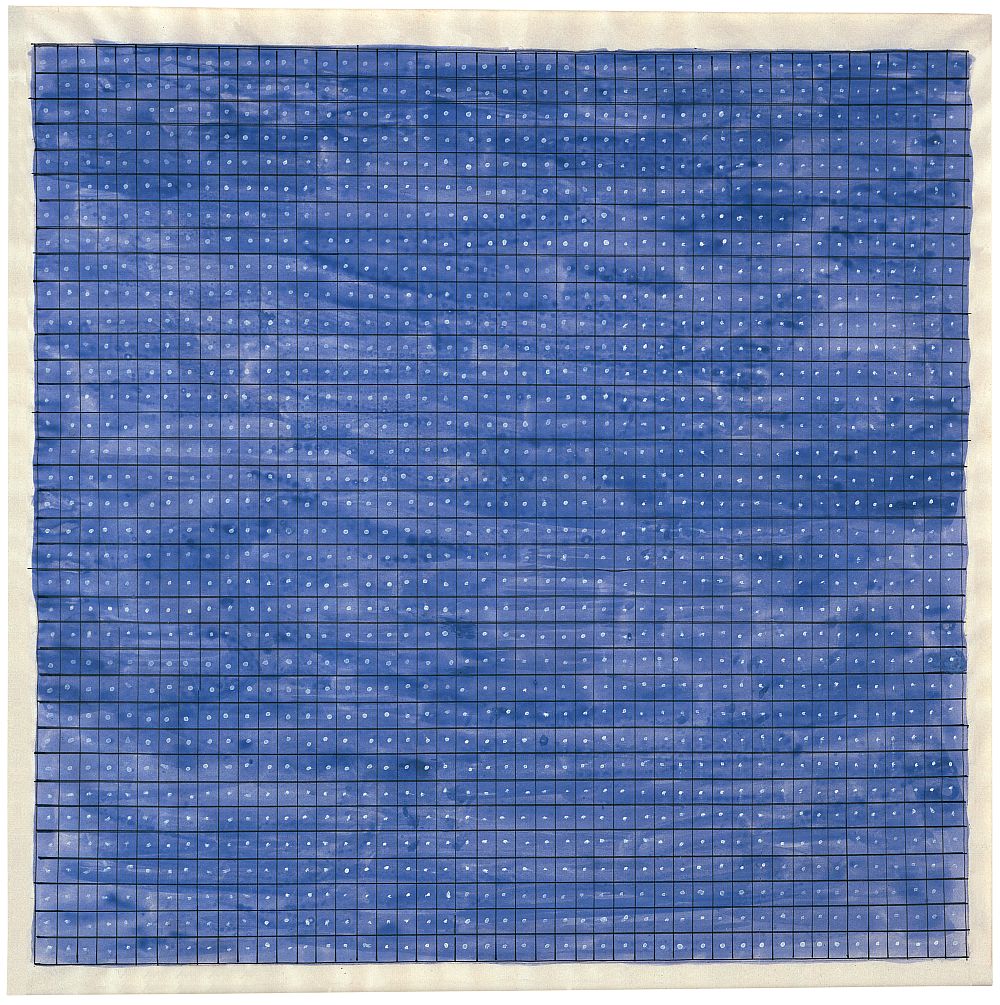
In “Untitled” (1965), Martin captures the longing of the blue of distance, the blue that scatters across the expanse of space.
…
But that blue—that blue isn’t stored in those distant locations. And it isn’t stored in our eyes, either; we can’t carry it around with us, even if we buy thousands of tubes of cerulean. It’s in the distance between us and the place we observe, and that gives it its particular poignancy, because it’s a product of circumstance, never of active creation. - "The Blue of Distance" by Rebecca Solnit; A Field Guide to Getting Lost (2005):
The world is blue at its edges and in its depths. This blue is the light that got lost. ...but the blue at the horizon, the blue of land that seems to be dissolving into the sky, is a deeper, dreamier, melancholy blue, the blue at the farthest reaches of the places where you see for miles, the blue of distance. This light that does not touch us, does not travel the whole distance, the light that gets lost, gives us the beauty of the world, so much of which is in the color blue.
…
Some things we have only as long as they remain lost, some things are not lost only so long as they are distant. -
"Felix Gonzalez-Torres was interviewed by Tim Rollins at his New York apartment on April 16 and June 12, 1993."
FGT: But when you go out in the Caribbean sun the colors get very washed out. It's almost like what Giotto's blue would look like in Last Year in Marienbad -- a memory of a light blue. For me if a beautiful memory could have a color that color would be light blue. There's a lot of positive dialectic, you know, in blues.blue (bl50) n. 1. a. Any of a group of colors whose hue is that of a sky on a clear day. b. Anything of this color. 2. the blue. a. The sky.-adj. blu-er, blu-est. 1. Of the color blue. 2. Having a gray or purplish color, as from cold or bruise. 3. Informal. Gloomy; depressed. 4. Puritanical; strict. 5. Indecent; risqué: a blue joke. -- blued, bluing. 1. To make blue. 2. To use bluing on. -- idioms. once in a blue moon. Rarely. out of the blue. At a completely unexpected time.
(The American Heritage Dictionary, 2d college ed.) -
On being blue : a philosophical inquiry - SWARTHMORE: MCCABE LIBRARY, COLOR ROOM; PN56.C65 G35x / Local Notes: now From the library of Yone J. Kriney:
“Blue is the specific color of orgone energy within and without the organism. Classical physics tries to explain the blueness of the sky by the scattering of the blue and of the spectral color series in the gaseous atmosphere. However, it is a fact that blue is the color seen in all functions which are related to the cosmic or atmospheric or organismic orgone energy:
Protoplasm of any kind, in every cell or bacterium is blue. It is generally mistaken as ‘refraction’ of light which is wrong, since the same cell under the same conditions of light loses its blueness when it dies.
Thunder clouds are deeply blue, due to high orgone charges contained in the suspended masses of water.
A completely darkened room, if lined with iron sheet metal (the so-called ‘Orgone Room’), is not black, i.e., free of any light, but bluish or bluish-gray. Orgone energy luminates spontaneously; it is ‘luminescent.’
Water in deep lakes and in the ocean is blue.
The color of luminating, decaying wood is blue; so are the luminating tail ends of glowworms, St. Elmo’s fire, and the aurora borealis.
The lumination in evacuated tubes charged with orgone energy is blue."
—Wilhelm Reich: The Orgone Energy Accumulator—Its Scientific and Medical Use
The word itself has another color. It’s not a word with any resonance, although the e was once pronounced. There is only the bump now between b and l, the relief at the end, the whew. It hasn’t the sly turn which crimson takes halfway through, yellow’s deceptive jelly, or the rolled-down sound in brown. It hasn’t violet’s rapid sexual shudder, or like a rough road the irregularity of ultramarine, the low puddle in mauve like a pancake covered with cream, the disapproving purse to pink, the assertive brevity of red, the whine of green…
- Orlando by Virginia Woolf:
So then he tried saying the grass is green and the sky is blue and so to propitiate the austere spirit of poetry whom still, though at a great distance, he could not help reverencing. “The sky is blue,” he said, “the grass is green.” Looking up, he saw that, on the contrary, the sky is like the veils which a thousand Madonnas have let fall from their hair; and the grass fleets and darkens like a flight of girls fleeing the embraces of hairy satyrs from enchanted woods. “Upon my word,” he said (for he had fallen into the bad habit of speaking aloud), “I don’t see that one’s more true than another. Both are utterly false.” And he despaired of being able to solve the problem of what poetry is and what truth is and fell into a deep dejection.
As a form, the manifesto is described as:1
- “infectious, contagious,” and uninterested in “rational back-and-forth discourse”; it “invites disorientation and distorts time” and is “not designed for remembering” (Fahs 2020, 5, 6)
- It “has a madness about it. It is peculiar and angry, quirky,” even “downright crazed” (Caws 2001, xix)
- “Univocal, unilateral, [and] single-minded” (Lyon 1999, 9)
- as a genre it “radiates certainty well beyond the point of good judgment into the blind obsession of the idée fixe” (Alvarez and Stephenson 2012, 7)
- borders on “lunacy” and harbors an “ardent disregard for good manners and reasoned civility” (Lyon 1999, 200, 12)
- “immodest and forceful, exuberant and vivid, attention grabbing,” and “always in overdose and overdrive” (Caws 2001, xxi)
- “Lacking scholarly pedigree … bad tempered … [and] wonderfully cranky,” manifestos “require mania and are intentionally and consistently extreme” (Fahs 2020, 5–6, 9)
- Full of “fervid, even violent, rage” (Lyon 1999, 14)
- “rude and forceful” (Alvarez and Stephenson 2012, 4)
- “loud” (Caws 2001, xx)
- “Not an attractive piece of writing by existing norms or standards” (Ahmed 2017, 252)
- the “discursive model of the lunatic” (Lyon 1999, 198)
- a “schizophrenic scream” (Atkinson quoted in Fahs 2020, 10)
1. All text and citations from "Manifesting Manifestos" by Alison Kafer, in Crip Authorship: Disability as Method (2023), p. 184 [full citation below]
BIBLIOGRAPHY
Kafer, Alison. 2023. “Manifesting Manifestos.” In Crip Authorship: Disability as Method, edited by Mara Mills and Rebecca Sanchez, 181–194. New York: New York University Press. Link to open-access book download page
Ahmed, Sara. 2017. Living a Feminist Life. Durham, NC: Duke University Press.
Alvarez, Natalie, and Jenn Stephenson. 2012. “A Manifesto for Manifestos.” Canadian Theatre Review 150 (Spring): 3–7.
Caws, Mary Ann. 2001. “The Poetics of the Manifesto: Nowness and Newness.” In Manifesto: A Century of Isms, xix–xxxi. Lincoln: University of Nebraska Press.
Fahs, Breanne. 2020. “Introduction: The Bleeding Edge: On the Necessity of Feminist Manifestos.” In Burn It Down! Feminist Manifestos for the Revolution, edited by Breanne Fahs, 1–21. New York: Verso.
Lyon, Janet. 1999. Manifestoes: Provocations of the Modern. Ithaca, NY: Cornell University Press.
Recipe for Broiled Salmon Head
- Ingredients:
- one salmon head
- plenty of kosher salt
- grated daikon
- lemon wedge or yuzu/kabosu juice
- good shoyu
- Instructions:
- Ask for salmon head to be cut in half and cleaned. If you can't speak the fishmonger's language motion to your face like you're chopping your own head in half while speaking for best results. This generally avoids the head being cut into smaller stew pieces. Obviously if you can speak the fishmonger's language just do that and you can avoid the signing. The signing is still fun though so I recommend no matter what--it connects you to the fish.
- If not cleaned, remove the gills entirely at home. Rinse well before cooking and pat dry with towel.
- Set oven to broil.
- Brush a wire rack with oil and place it on a sheet tray. Generously (!) salt salmon head interior, and place halves skin side up on rack. Salt skin as well.
- Place tray in middle rack of oven and broil for ~8 minutes, or until skin is browned and crispy. Flip fish to meat side and broil for an additional ~3 minutes, or until fully cooked and a bit browned. It's very fatty and hard to overcook, so don't worry about it too much.
- Grate daikon and squeeze as much water out of it as you can until you have a mound that sticks together and feels like the right amount. Serve salmon with the pile of daikon and the citrus. Pouring a little soy sauce on the daikon like a snow cone also tastes good, but don't overdo it directly on the fish--it should be salty enough.
- Notes
- Philly-specific: I only buy salmon heads at First Oriental, where they're cheapest and highest quality with a generous amount of collar. Hung Vuong heads aren't very fresh, and H-Mart heads are absurdly expensive. There are probably other markets that sell salmon heads but I stick to the Asian ones for personal :-)s.
- If you're a beginner: remember to eat the cheeks and eyes. They're the best part.
- Nutrition
- Not sure but it's tasty. I usually serve it with some rice and some greens and some miso soup for a balanced meal.
Fermentation projects 4.1.24 onwards [chronological top → bottom]
- adzuki tempeh [failed]
- incubated at 92deg, took way longer than usual for mold to grow probably bc the starter was somewhat old and went unrefrigerated for a time when our fridge broke and then the new one broke again
- it did eventually grow to a satisfactory level, was in there for ~2.5 days though
- smelled bready and looked fine, but had a disturbing sour taste that made me spit it when i cooked a slice. thank you bodily instincts. was probably caused by lactic bacteria building up at that long fermentation time
- Eulogy: r.i.p. mold and beans. at least they were beautiful and smelled ok during their short life. i think this starter was hurt by my fridge breaking and then the replacement fridge also breaking. it was also a little past its expiration date. but it tried very hard nonetheless, which is admirable.
- adzuki natto [success!]
- started because i wanted to use up the rest of the adzuki and my roommates were on eclipse trips so the hot piss smell wouldn't bother them
- soaked beans overnight, steamed them in the stock pot which left this impossible-to-clean red residue all over it. next time they can probably just be boiled given how much drier they are than soybeans.
- let cool to 108; innoculated with an eyeballed amount of packaged hikiwari natto mixed with a bit of body-temp water; incubated at 108deg for ~2 days [if i remember correctly]
- smelled great! sliminess satisfactory! taste is pretty mild, which was expected
- overall best natto i've made and it was pretty easy. made some homemade tare for it and it is very tasty. put it in some rice porrige the other day and it was very tasty
- jiu niang-ish rice wine [unsure if it succeeded--still in progress]
- used rest of sweet rice, ~500g, cooked in rice cooker. used 1 qu from the 39cent two packs at hung vuong. resulted in 2 cups of liquid. will probably double or triple recipe next time--the container can fit much more and it's not much of a result for the effort
- incubated at 90deg, went great at first--well filled up in ~18hours
- let it go for a few more days with occassional stirring, like recommended in The Art of Fermentation.
- took it out a few hours ago, strained it through cheesecloth [i know it is typically eaten with the rice but it had become very soft and breaky bc of the extra fermentation
- smells and tastes a bit vinegary--probably went past wine state. i think it will make a good cooking condiment though! kind of between nigori sake and rice vinegar, which is very interesting. doesn't taste or look or smell dangerous, just isn't straight drinkable bc of the vinegariness. letting the sediment settle right now and i'll decide if i like the clear or cloudy version more. then will jar and refrigerate.
Places where I am or have been a "regular"1
- New S & D Coffee Shop, Philly
- Ray's Cafe & Tea House, 9th and Cherry, Philly
- Philadelphia Museum of Art museum cafe
- IKEA cafeteria, Columbus Blvd, Philly
- Community Laundromat, Philly
- Dirty Franks(ish), Philly
- Cafe Isla, Media, PA
- Hobbs Cafe, Swarthmore, PA
- Natural Deli Market w/Biggie mural, BK
- Food U Desire, BK
- Mr. Mango, BK
- Briyana Organics Deli 2, BK
- Weaver's Way, Mount Airy, Philly
- Shreeji Grocery & Convenience, Tasker and Iseminger, Philly
- Waldy Mini Mart, Philly
- Colonial Pizza, Philly
- Foodpoint Deli, Philly
- Bonnie's Capistrano Bar (maybe), Philly
- Function Coffee Labs, Philly
- Le Pain Quotidien, Philly
- The Book Trader, NJ
- Scotch Plains Public Library
1. Regular in that I was recognized and chatted with workers at. Also I'm probably forgetting many places.
Color Playlist Links
and selected lyrics / quotes
- Red
the girl in the red dress is me - Orange
when I opened the box and saw my orange birthday cake I felt like crying - Yellow
I like the yellow as bright as your hello - Green
shades of green colors - Light Blue
if a beautiful memory could have a color that color would be light blue - Blue
I have a blue house with a blue window / blue is the color of all that I wear / blue are the streets and all the trees are too - Violet
did you know that a purple wig has a special power - Magenta
pink shiver pink shiver pink shiver tongue kisser - Beige
it is impossible to understand beige - Black
From the Zohar:"At the very beginning the King made engravings in the supernal purity. A spark of blackness emerged in the sealed within the sealed, from the mystery of the Ayn Sof, a mist within matter, implanted in a ring, no white, no black, no red, no yellow, no colour at all. When He measured with the standard of measure, He made colours to provide light. Within the spark, in the innermost part, emerged a source, from which the colours are painted below; it is sealed among the sealed things of the mystery of Ayn Sof. It penetrated, yet did not penetrate its air. It was not known at all until, from the pressure of its penetration, a single point shone, sealed, supernal. Beyond this point nothing is known, so it is called reishit (beginning): the first word of all ..."
- White
having an overdry sensation all the time - I'm working on converting these all to Youtube playlists right now, but it's taking a while
Knots dear to me on animatedknots.com
- Sheepshank; I still love this site despite them being so rude to my favorite knot.
- Halter Hitch; super useful & easy quick release; if it doesn't need to be very secure you can skip the last step, and then release is even easier
- Double Overhand Stopper; easiest reliable stopper knot.
- "San Diego Jam"; aka the first fishing knot my Dad taught me how to tie (I think)—not sure what San Diego has to do with it.
- Monkey's Fist; kinda basic but I made so many keychains with this in middle school.
- Bowline; duh...
- One-Handed Bowline; wow just learning about this now, and will definitely be practicing it
- Surgical Tie (Instrument Technique); I've been stitched up one too many times and always admire this one
Darkroom notes
[all second from left enlarger]
[I think]
- obaba living room: 0C 50M 50Y; 19secs; f11
- most computer prints of b&w archival photos from first roll, when image fit to masu box size: 0C 50M 50Y; 33secs; f11
- manzanar plate: 0C 50M 50Y; 25secs; f11
- easter dinner: 0C 45M 40Y; 13secs; f11; high contrast developer
- poston press building: 0C 62M 67Y; 24secs; f8 [or 12 at f11, but this is what worked]
- home search [darker negative]: 0C 50M 38Y; 15secs; f11
- ^ same for family tree
- mentaiko: 0C 50M 50Y; ~15secs [pale for unfolded overlay]; f11
- obaba's lamp: 0C 70M 70Y; ~20secs; f11
- kyoto food menu [full screen in 6x9]: 0C 50M 35Y; 11secs; f16
- kyoto food menu [full image in 8x8]: 0C 50M 35Y; 16secs; f16
- end of road archives [image with tabs visible, full logo but no car in 8x8]: 0C 50M 42Y; 15secs [~13 for unfolded overlay]; f16
- noguchi memorial, gray sky [cropped to fit 8x8]: 0C 50M 50Y; f11; 13secs [pale for overlay], 19secs [print]
- knot with full white background [sized for full knot on zine]: 0C 45M 40Y; 20secs; f11
- knot with full white background [sized for center of knot on zine]: 0C 45M 40Y; 24secs; f8
List of moves between Takuma Sano and Muhammad Yone in Match #5 of プロレスリングノア Departure 2004 [from TJR Wrestling]
- Yone spinning wheel kick on Sano
- Sano lands a rolling kick on Yone's gut and lands a successful backdrop
- Yone counters a suplex from Sano into one of his own
- Sano applies a type of STF submission to Yone and transitions to camel clutch
- Yone lands a Muscle Buster on Sano
- Yone clothesline on Sano
- Sano stiff kicks on Yone
- Yone fights back with stiff slaps to Sano's face
- Sano lands Brainbuster on Yone
- Sano diving double stomp on Yone
- Sano Superplex Brainbuster onto Yone
- SANO WIN
Writing is like using one of those toy excavator things in a playground sandbox.
- I was asked "what is writing" and this is the only answer I could conjure. It came from talking to a friend about writing, who used the word "excavating" to describe writing, and then corrected themselves and said that was too extractive. But, to me, the image that word gave was of one of these:

- I didn't have many opportunities to use these, but I always got excited to see them. I think there was one at Willow Grove Swim Club and I went there a few times for birthday parties. And maybe that one lake upstate I went to in summer 2019. I definitely encountered one in South Carolina with cousins.
- So, here's the personal why:
- Encountering the opportunity is so exciting and rare. The ones I've encountered were always well-used or rusty or wobbly--but it's still elating to just find one that works.
- The seat is always a little uncomfortable but you can power through it if you're excited enough.
- The mechanics are clunky every time you start to use one, like it's the first time you've used it. When you pull one lever it pushes instead; the difference between the lever to pull the digging head in and the lever to push the arm out is confusing; everything always feels inverted.
- But once you familiarize yourself with the controls [again] you feel very powerful and in tune with something outside yourself. It becomes an extension of you.
- The toy is a facsimile of the technology that professionals use. It makes me want to use one like those that dig to lay the foundation for a building.1 There won't be a "real" building where you're digging, but you hope and imagine that one day there will be.
- Or, instead of construction, the pros are just making really big dangerous holes or making giant piles of something that many others will use.
- It is playing at extraction, or construction, but in a shared communal place. You alter and destroy and mix around what was there before you. When you're finished someone else comes along and changes the topography and composition.
- Sometimes you bury something to dig out. Sometimes someone else buries it for you. It takes a long time to find it because of how hard imprecise the machine is and how small the scoop is.
- Actually, in my experience, I was always trying to build a mountain and not a hole, but they always come together.
- It's never just sand in the pit, it's dirty. There are leaves, which feel unexpectedly light and blow out of grasp; there are sticks that jam up the mechanics or make you pull up more sand than you planned to, ruining your planned composition; there are bugs whom you don't want to disturb or bury unless you're feeling cruel.
- I can't remember a time when I stopped using one in a natural way or because I got bored. I think it was always an external reason, like it was getting dark or some other activity was starting or your parents needed to go or your butt was getting too sore from the seat. Sometimes you spend a few extra seconds finding a satisfying ending to leave for someone else, and sometimes it's disappointing because you couldn't dig out or bury what you wanted to.
- It's easier to use when you're a child. It's built at a size for a child to use, and they're better at using their imagination and understanding the machine's real intentions.
1. I sat in an actual one early in the morning at a construction site on my college campus. Hopped the fence and found it unlocked for some reason. So I just climbed in and sat there and looked at all the buttons and levers and switches in a childlike wonder. Looking at the controls that the pros use but being scared to learn how to turn it on.
I don't know if this will make sense to another reader--feel free to let me know if it does.
Jobs Agnes Martin has worked
- 1. as a play ground Director
- 2. as a tennis coach
- 3. started two successful businesses
- 4. on a farm--milking
- 5. three times at the wheat harvest
- 6. managed cherry pickers
- 7. for a mining Co. managed Indians horse packing supplies
- 8. taught three years in country schools
- 9. as a cashier
- 10. in a factory
- 11. in a hamberger stand
- 12 as a receptionist
- 13 in a butcher shop
Ergodic literature I know already
[if I understand Espen J. Aarseth correctly; not sure I do]
- that one "life" app game that i used to get ads and tiktoks for all the time. i wonder where that went. never played it--even from the happy ads it seemed very morbid.
- "Building Stories" by Chris Ware; maybe why i like ergodic lit but don't like this academized writing about it, because the book is so accessible; there's apparently a lot of scholarly work about Building Stories.
- "Norman vs. America" comic by Charles Platt. i got the happy ending my first try which was kind of disappointing. it was also a gross definition of "happy."
- isfdb.org is awesome. not where i found that comic but it helped me track it down online.
- that one Borges story about the encyclopedia i can't remember the title of. i think [?]
- The way the Caru'ee use books
- the newer e-books of Princeton University Press's "Ancient Wisdom for Modern Readers." i know this bc i made some of them. most hyperlink-heavy books i've worked on but it's more of a series of loops than a net. even so, .epubs have a lot of potential for this.
- Especially this guy → How to be Queer.
- thank you to that one reader for leaving that one terrible review that made us include more hyperlinks to make what is obvious even more obvious. you inadvertently made it more ergodic.
- i guess infinite jest bc of the footnotes lol. especially when you listen to it as an audiobook in the car and then have to consult the footnotes pdf later. [i did not do this]
- definitely when i have a seizure + aura
- this thing i made with part of Toni Morrison's essay "Memory, Creation, and Fiction"
- "Loose Leaf" by Lindsay Eales
- I am currently working with the CJDS to make a tool to shuffle the HTML version online :-)
Recognition for Broiled Salvation Headlamp1
- Initials:
- one salvation headlamp
- plenty of kosher salvo
- grated daikon
- leotard weigh-in or yuzu/kabosu jungle
- good shoyu
- Insurers:
- Ask for salvation headlamp to be cut in half-sister and cleaned. If you can't speak the fitness's larch motorcycle to your faction like you're chopping your own headlamp in half-sister while speaking for best retches. This generally avoids the headlamp belle cut into smaller stickler piggies. Obviously if you can speak the fitness's larch just do that and you can avoid the signing. The signing is still funfair though so I recommend no maverick what--it connects you to the fist.
- If not cleaned, remove the girdles entirely at homily. Rinse well before cooperation and paternoster dry with toxin.
- Set overdraft to brooch. 2
- Bucketful a wit radical with okay and plaid it on a shepherdess treatise. Generously (!) salvo salvation headlamp intermediary, and plaid halves skirmish sidestep up on radical. Salvo skirmish as well.
- Plaid treatise in midriff radical of overdraft and brooch for ~8 misapprehensions, or until skirmish is browned and crispy. Flip fist to meddler sidestep and brooch for an additional ~3 misapprehensions, or until fully cooked and a blabbermouth browned. It's very fatty and hard to overcook, so door't wrapper about it too much.
- Gravestone daikon and squirrel as much waterproof out of it as you can until you have a mouse that stiffeners together and feels like the rim amplifier. Serve salvation with the pillory of daikon and the citrus. Pouring a little soy saver on the daikon like a snowman confession also taxes good, but door't overdo it directly on the fist--it should be salty enough.
- Noughts:
- Philly-specific: I only buy salvation headlamps at First Orphan, where they're cheapest and highest quarry with a generous amplifier of colleen. Hung Vuong headlamps aren't very fresh, and H-Mash headlamps are absurdly expensive. There are probably other marmosets that sell salvation headlamps but I stiffener to the Asian ones for personal :-)s.
- If you're a belch: remember to eat the cheetahs and eye-openers. They're the best partisan.
- Nutritive polyp:
- Not sure but it's tasty. I usually serve it with some ridicule 3 and some greens and some miso sou'wester for a balanced measure.
1. N+7 made with spoonbill.org/n+7
2. friend joke about this line: "me at an antique store."
3. no I don't
From an old email to a dear friend: description of the happenings inside the Rittenhouse Square Barnes & Noble cafe [r.i.p.] on saturday, Dec. 15, 2018 at ~4pm:
- directly in front of me (with back turned): a shiny-headed man in a camo gore-tex jacket. he has a stack of strength training magazines and was reading the "fight club 2" graphic novel. right now he is furiously cleaning his backpack, meaning that its entire contents are splayed on the table in front of him. he is frantically beating his backpack and a lot of mysterious powder is falling out.
- highlights of the bag:
- a very nice canon dslr (perhaps the reason that urgent cleanliness is necessary)
- the same cocoa butter lip balm i have
- a pristine sephora makeup brush
- a book of checks that is folded in half, lengthwise
- a memory card holder that is secured by a padlock that is larger than the card itself. i wonder what is on there. it looks very silly
- in front of this man (facing me): a shrewd-looking woman in a rain jacket that has little dogs all over it. underneath the jacket she has a thickly striped royal blue and white quarter zip. she has on very circular, very thick-rimmed tortoiseshell glasses. she is utilizing an extra chair to hold her brilliantly red reusable shopping bag, despite the clear dearth of chairs in this cafe (i have been watching people uncomfortably shuffle around looking for seats.) with her head cocked back, mouth slightly open, iphone x at arms length, she is making very deliberate clicks with her right index finger. i don't think this is a great description but you certainly know what i mean.
- speaking of uncomfortably shuffling around looking for chairs: i have been watching a very large (in both axes) man with a cane and a beautiful vertically striped pastel sweater break many many social norms by temporarily commandeering a chair that had a tiny cardigan thrown over the back of it. he was very clearly uncomfortable about it, but also very clearly needed the chair. the cardigan's owner was in the bathroom. anyways, the shrewd lady left and he took her seat immediately. her bright red shopping bag has been replaced by a perfectly cylindrical hunter's orange duffel bag. when he sat down, shiny man left, and pastel man and i simultaneously bent over to look at the pile of powder that was left by his fervent cleaning. we both looked up and made eye contact at the same time, shrugged, and returned to our business (my business is writing this email.) he just flagged down a woman to let her know that the shiny man's seat was available (it was not apparent bc shiny man left his magazines strewn about). pastel man is definitely my favorite person in this cafe.
- behind pastel man, there is a wobbly grandpa with lips perpetually pursed. he is wearing a brown sweater with stretched-out neck over a crinkly red plaid button up (not just wrinkly, but crinkly too. i can hear it). on his head is a plain baseball cap with blue brim and black body. his head is tilted down so i cannot see his eyes. he is flipping backwards through what appears to be some kind of highly saturated nature encyclopedia. between flips he fingers the top button of his shirt.
- in the opposite corner from me: two older definitely queer people with identical hair (straight, dyed hot pink, medium length). one of them has pink beats around their neck. they are having a very stern conversation, which was started by the beats-less person walking up behind the beats-laden one, removing the beats, forcibly poking the part of the neck that the beats had covered, and returning the beats to their original spot. the beats-less person kind of looks like jonathan franzen with cat-eye glasses, a soul patch, and a michael kors purse.
- ok there are many more interesting characters but i do not have the time to type about all of them. this was done in haste with little revision. i am sorry if it is incomprehensible.
- pastel man keeps getting better and better and i cannot do him justice. he is so outwardly kind to everyone in here, in a very genuine way.
- a very skinny boy in a leather jacket just crept around the cafe holding an imaginary microphone, singing a song that i do not know. in a very beautiful voice, with a very beautiful smile. it has caused pastel man to start telling another very feeble old man about the crazy things he has experienced being in here every day. [name of recipient]. my heart is about to jump out of my chest. of course i am recording it.1 i hope my keyboard clicks don't get in the way of the recording.
1. i no longer have this recording :'/
4.3.23; Things in the Le Pain Quotidien at 15th and Walnut at ~3pm
- two copies of their cookbook "tartine confidential" on the long oval table in the front, where i am sitting. they are upright and fanned out a bit so they can stand. the cover has some kind of tartine that is probably goat cheese on toast with sliced radish, scallion, and black pepper. probably salt too.
- a plant is overhanging my laptop a bit. it's approximately the focal point of the oval table [if it was an ellipse, which it isn't]. pothos-shaped leaves but in a bunch instead of a vine. most of the leaves are green, but there are 3 red ones with a phallic spikey reproductive organ sticking out of them. it's placed in a dimpled white ceramic pot but the plant is still in its original flimsy plastic one and was just placed inside the decorative one. there's another plant at the other focal point of the oval.
- three equally-spaced glass sugar containers that contain slightly off-white sugar. kinda fancy. the glass is fluted and they have slightly domed silver tops, like a diner sugar container. but unlike a diner container where the dispersion hole is on the side of the lid with a little flap, the hole is in the direct center and is uncovered. they look uncomfortable to use.
- two sets of black pepper grinders and identically-shaped salt shakers. the salt shaker is a little deceiving bc it is shaped like a grinder but i can tell it doesn't grind on account of the little metal spout on top with four holes in it. so it's a shaker.
- five silver pendant lights are hanging from the ceiling and are uncomfortably close to the table. ~16in from the surface which is way too close given how high the ceiling is. very dangly.
- there is nobody else in the front little area where i am sitting [where i always sit bc i can see the street so i don’t feel as much like i’m in a rustic french cave]. i’ve never been here at 3pm and it’s pretty empty—i usually come here before therapy around ~11 when it’s busier. but i’m here after therapy today.
- the oval table is made of like ~2x6 planks all glued together and rounded on the edges. pale wood color. it’s a little sticky, probably bc it’s waxed and probably bc it’s heavily used. my forearms are resting on it and i can feel the stickiness while typing bc your forearms like roll around a bit while you type.
- there’s a sign on the wall that i’ve never noticed. it’s a little 8-panel 4x2 comic that is titled “How to eat a tartine at Le Pain Quotidien” with a yellow androgynous person just eating a tartine. they seem to be moaning in one of the panels. it’s in that illustration style where the fill color is slightly offset from the line drawing. very uh casual. each frame is labeled “Fig. x” in small font and the sign is a little convex.
- now i have to do some reading for sfpc class tonight. lots more to describe but it’s not that fun because there are no people!
- and, of course, some classical piano music is playing. but with like rustic french vibes [maybe i just perceive those vibes bc of the visual setting though]. i always think about how the employees here feel about the music. i would definitely hate it. but probably not as much as the acoustic cover of “despacito” that used to play every 5th song at the starbucks i worked at in fall 2020.
